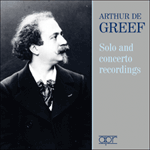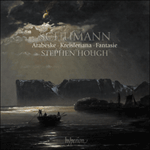
Welcome to Hyperion Records, an independent British classical label devoted to presenting high-quality recordings of music of all styles and from all periods from the twelfth century to the twenty-first.
Hyperion offers both CDs, and downloads in a number of formats. The site is also available in several languages.
Please use the dropdown buttons to set your preferred options, or use the checkbox to accept the defaults.

from notes by Natasha Loges © 2021
extrait des notes rédigées par Natasha Loges © 2021
Français: Marie-Stella Pâris
aus dem Begleittext von Natasha Loges © 2021
Deutsch: Viola Scheffel
 Arthur de Greef - Solo and concerto recordings Arthur de Greef - Solo and concerto recordingsBelgian pianist Arthur de Greef studied with Franz Liszt and also became a close friend of Grieg, who strongly admired his playing. He was a mainstay of the HMV catalogue in the 1920s and this set brings together for the first time his complete re ...» More |
 Schumann: Arabeske, Kreisleriana & Fantasie Schumann: Arabeske, Kreisleriana & FantasieThe emotional sweep of these three marvellous works, reflecting the vicissitudes of Schumann’s complex personal life at the time, calls for a pianist wholly responsive to their fervent Romanticism. The artistry of Stephen Hough proves ideal.» More |
 Sergio Fiorentino – The Early Recordings, Vol. 6 - Schumann Sergio Fiorentino – The Early Recordings, Vol. 6 - Schumann |

